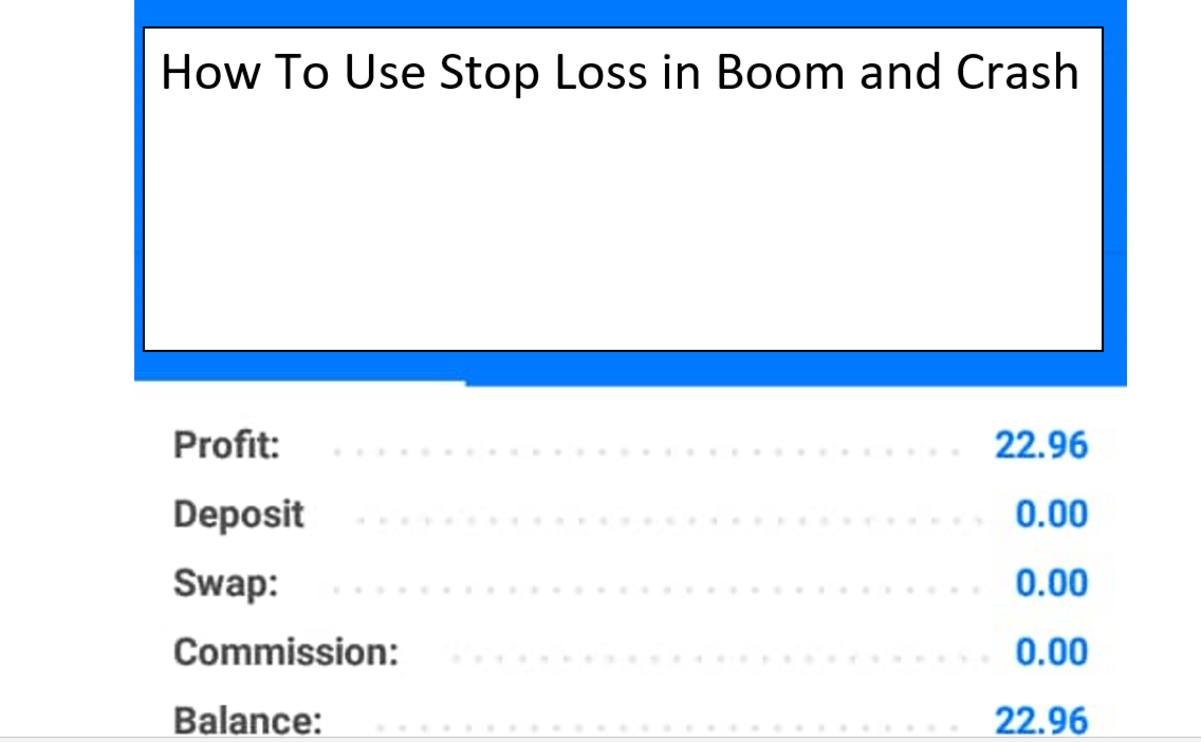Does stop loss works on Boom and Crash? off course it does, in this article, I am going to guide you on how to use stop loss in Boom and Crash. But before we continue, let’s look at the concept of Stop Loss.
Don’t be left out, Learn how to trade forex the right way, Click here to get started
Table of Contents
What is Stop Loss?
Stop loss is a limit order you place on chart to limit your loss on your open trading position. It is one of the most important concept of risk management in forex trading; and when use properly, it can make a whole lot of difference in your trading history.
How to Use Stop Loss in Boom and Crash
Before looking at how to use stop loss in Boom and Crash, let me briefly explain how stop loss work in Boom and Crash.
How Stop Loss (SL) work in Boom and Crash.
If you are buying Boom and Selling Crash, where ever you put your stop loss is the end point of your trade assuming the trade is not going on your predicted direction. But if you are selling boom and buying crash, the stop loss is dependent on the length of the spike; just like the take profit point when you are selling Crash and buying Boom.
Take for instance, if you are buying Crash 500 at 5074 and your stop loss is at 5024, if there is a crash, where ever the crash end is where your stop loss will end. If there is a long crash and it ends at 5000, your SL will be at 5000.
It also the same for take profit level when you are selling Crash and buying Boom, wherever the spike end is where your take profit level will be. For instance, if you sell Crash 500 at 5104 and you put you take profit at 5074, if there is a long crash and it reaches 5024, that is where your take profit will end.
These Steps are Important When Picking your SL on Boom and Crash
The under-listed steps are based on my experience of the market. I believe if you use them effectively, it will be very useful to your trading journey.
Step 1: Mark out your Point of Interest (POI)
Point of interest are points on your trading chart that will give you high probability trades. As a trader, the first thing you should do when you open your chart every trading day is to mark out some points of interest that will assist you in entering or exiting the market. These points of interest are usually support and resistance point, consolidation zones, etc.
Step 2: Spelt out conditions to guide you on how to choose your point of interest.
Don’t just pick point of interest randomly, have a plan and a strategy that will guide you to pick good points in order to get high-probability trades.
Step 3: Place your SL and TP slightly above or below your chosen POI depending on your trade direction
If you want to buy Crash 500 at 5024, because there is a good buying probability based on your analysis and some market forces. Let say, if part of your reasons for wanting to buy Crash 500, is because the price always bounce back up at 5024 and you have marked it as your POI. While, you are not certain, if the price will break down, you need to place your SL few pips below the closet support level to your POI.
This is very Important as the SL will limit your loss if the price breaks your POI at 5024. But if it does not, you can move your SL up to secure some profit once the trade is in good profit.
The Concept of SL is very important in forex trading, if you use it effectively, you will enjoy your Forex trading journey.
Disclaimer
Deriv offers complex derivatives, such as options and contracts for difference (“CFDs”). These products may not be suitable for all clients, and trading them puts you at risk. Please make sure that you understand the following risks before trading Deriv products: a) you may lose some or all of the money you invest in the trade, b) if your trade involves currency conversion, exchange rates will affect your profit and loss. You should never trade with borrowed money or with money that you cannot afford to lose.

